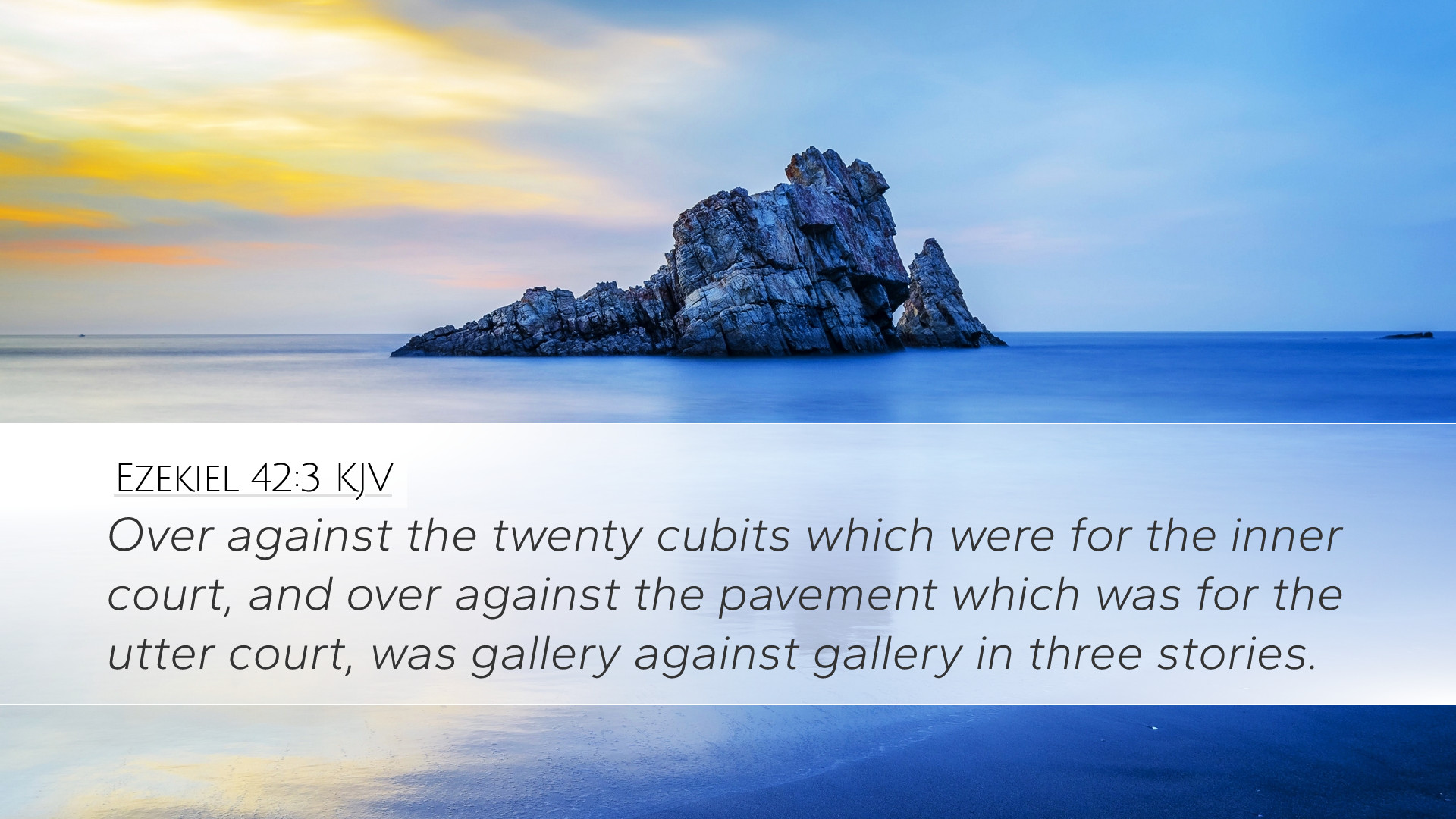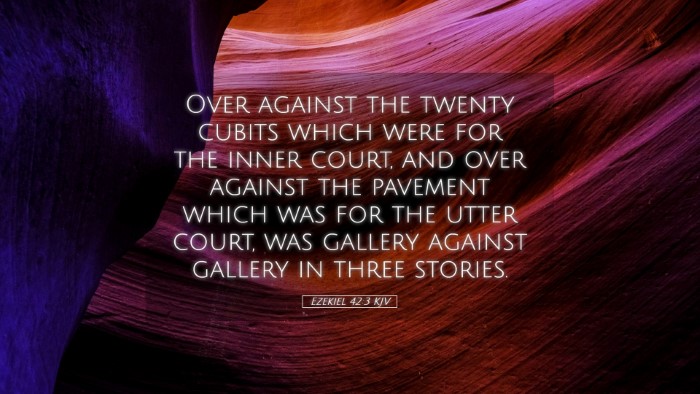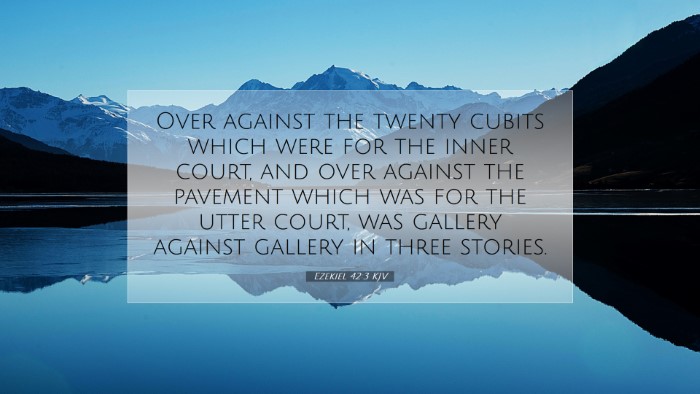Ezekiel 42:3 Commentary
Verse Text: "Over against the twenty cubits which were for the inner court, and over against the pavement which was for the outer court, was gallery against gallery in three stories."
Introduction
The verse from Ezekiel 42 provides a glimpse into the detailed architectural design of the temple complex, a crucial aspect of Ezekiel's prophetic vision. The verse highlights the arrangement of galleries and the structural relationship between the inner and outer courts of the temple. Understanding the significance of these details offers deeper insights into the broader themes of holiness, worship, and the presence of God.
Contextual Background
Ezekiel's prophecy occurs during the Babylonian exile, a time of dislocation for the people of Israel. This vision serves not only as a blueprint for the future temple but also as a source of hope and restoration for the Israelites. The meticulous descriptions of the temple in Ezekiel are meant to instill a sense of reverence and anticipation for the reestablishment of proper worship and the return of God’s presence among His people.
Architectural Insights
- Three Stories of Galleries: The mention of galleries against galleries suggests a tiered structure, providing multiple levels for worshippers and priests. This architectural design may reflect the increasing sanctity as one moves closer to the inner court, symbolizing a spiritual ascent toward God.
- Significance of Dimensions: The twenty cubits mentioned emphasizes a relationship to God's order. The codified measurements not only reflect physical boundaries but also delineate the sacredness and separateness of the areas within the temple complex.
- Contrast of Inner and Outer Court: The verses draw a distinction between the inner and outer courts. The inner court symbolizes intimacy with God, while the outer court represents accessibility for worshippers. This architectural dichotomy can reflect the broader theological truth of God's holiness and mankind's need for mediation.
Theological Reflections
Divine Order: The meticulous layout of the temple speaks to God’s desire for order in worship. It suggests that God is not only the object of worship but also the architect of worship, calling His people to approach Him with reverence and intentionality.
Access to God's Presence: The layered structure implies that while access to God is possible, it must be approached with awareness of holiness. The galleries allow for broader visibility and participation, underscoring the communal aspects of worship as well as personal relationship with God.
Commentator Insights
- Matthew Henry: Henry emphasizes that the description of the temple serves as a means to show God’s glory. He reflects on how these architectural features highlight the majesty of God’s house and the solemn nature of worship undertaken therein.
- Albert Barnes: Barnes notes the significance of the temple’s structure, suggesting it reflects the mediation between the divine and human realms. The arrangement of the courts suggests an order of proximity to God, reinforcing the ritualistic aspects of worship in Israel’s tradition.
- Adam Clarke: Clarke draws attention to the exact measures provided in Ezekiel's vision, which he interprets as a reminder of God’s perfect design. According to Clarke, the three stories symbolize the trifold nature of worship: worship in spirit, in truth, and in the physical act of sacrifice.
Practical Application
The insights drawn from Ezekiel 42:3 are not merely historical or architectural but are deeply relevant for contemporary believers:
- Preparation for Worship: Just as the temple required a specific structure, so too should believers prepare their hearts and minds for worship. Personal and communal spaces for reflection can enhance the worship experience.
- Understanding Holiness: The call to recognize God’s holiness is paramount. Believers are encouraged to approach God with awe, understanding the serious nature of entering into His presence.
- Encouraging Community Worship: The notion of galleries representing community highlights the importance of gathering as the body of Christ. The design fosters fellowship and collective worship, fundamental concepts in the New Testament church.
Conclusion
Ezekiel 42:3 serves as a profound reminder of God's presence and the nature of worship. By analyzing the architectural elements provided in this vision, students, pastors, and theologians can derive insights into God's desire for a structured and holy approach to worship. Ultimately, the temple—physical and spiritual—invites all believers to engage in a life of worship that reflects God's order, holiness, and communal grace.


